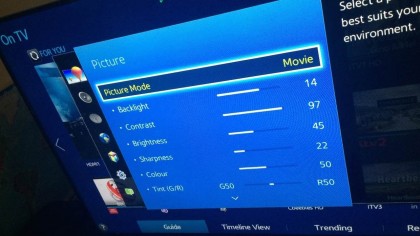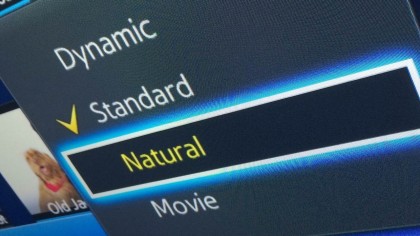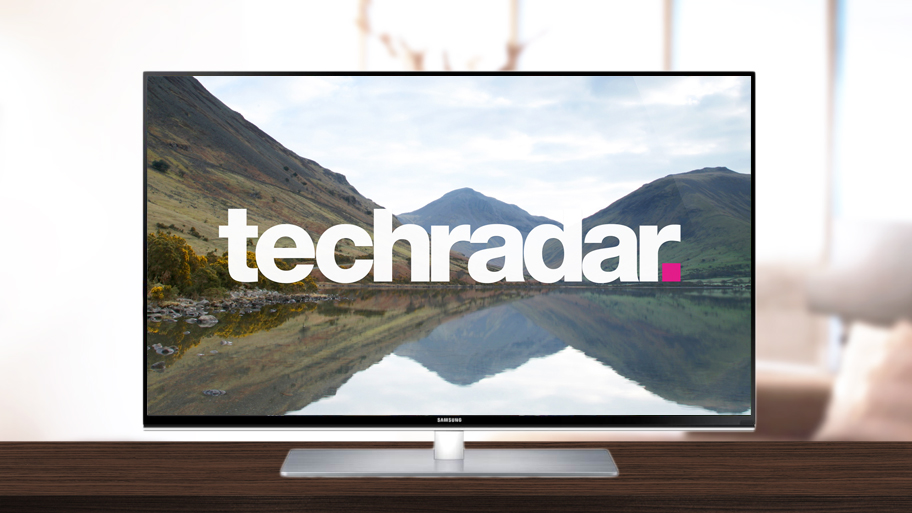Why you can trust TechRadar
The UE48H6700 exists almost solely to have a better image than the UE48H6400, and it achieves that at a canter.
The key additions are Micro Dimming and a better Clear Motion Rate; the former to improve contrast and black levels, and the latter designed to reduce the motion blur (something that remains endemic to all LED-backlit LCD panels).
The UE48H6700 boasts excellent contrast. A mixed brightness scene from Gravity on Blu-ray that shows searing light and the inky black of space in the same frame instantly impresses, while star-fields are displayed with skill throughout the movie. There is a black level enhancer hidden in the advanced setting, though it's barely noticeable unless you're watching in total blackout conditions. It doesn't particularly improve on either black levels nor shadow detail.

As usual on Samsung TVs, the colour presets are a little wayward, with the movie mode being too warm and the standard too cool, but there are plenty of settings to play with to get the best picture.
During the review I was on the lookout for blotchy areas of light along the edges of the screen – indicative of an average LED-backlit LCD panel – but there was barely a trace visible even in a blackout. The viewing angle is perhaps a little narrower than on the UE48H6400, though there's hardly a nose-dive in contrast and colour until the TV is being watched from a pointlessly tight angle.
If the Micro Dimming appears to work really well, so does the anti-blur Clear Motion Rate 600 system. Ignore the maths involved; this is a 100Hz-rated LCD panel, and it behaves like one. It's mostly smooth, though the odd blur does creep in during quick camera pans.

The feature it sits behind is called Motion Plus, which is worth navigating to. The clear setting is terrible, with judder during Blu-ray discs unwatchable, but push it up to the standard setting (the labels make no sense!) and the action is fluid and blur-free. The smooth setting, the most powerful, is a tad hyper-real with occasional fizzing around moving objects, too.
However, while watching some hockey from the Commonwealth Games via the BBC iPlayer, I did notice the panel's architecture as a motion-less object behind the fluid image. Especially noticeable during quick camera pans across the pitch, this "chicken wire" affect is hardly a rare occurrence – I've seen it on top-end Sony TVs and virtually every other brand of LED TV going – but it does remind me that the passing of plasma has taken with it an overall far superior picture.
That said, the UE48H6700, when on top form, offers terrific images. Still images enjoy a pristine, highly detailed treatment and, overall, Samsung's 3D HyperReal Engine picture engine works a treat, upscaling SD channels from the Freeview tuner to HD adeptly, while issuing good-looking and exceptionally well saturated colours throughout a mix of both Blu-ray and far lesser quality footage.
A 3D run-through of Gravity proves the UE48H6700's core quality, with the lethal orbiting debris crashing into the space shuttle creating depth-filled sequences. Even such dramatic speed and destruction caused the UE48H6700 few problems, with virtually no crosstalk visible and only a modicum of motion blur. I'm not saying it was totally comfortable to watch, nothing is while wearing flicker-full 3D specs, but it doesn't get much more detailed, more contrasted, more colourful or more impressive (for the money) than on the UE48H6700.
Jamie is a freelance tech, travel and space journalist based in the UK. He’s been writing regularly for Techradar since it was launched in 2008 and also writes regularly for Forbes, The Telegraph, the South China Morning Post, Sky & Telescope and the Sky At Night magazine as well as other Future titles T3, Digital Camera World, All About Space and Space.com. He also edits two of his own websites, TravGear.com and WhenIsTheNextEclipse.com that reflect his obsession with travel gear and solar eclipse travel. He is the author of A Stargazing Program For Beginners (Springer, 2015),

